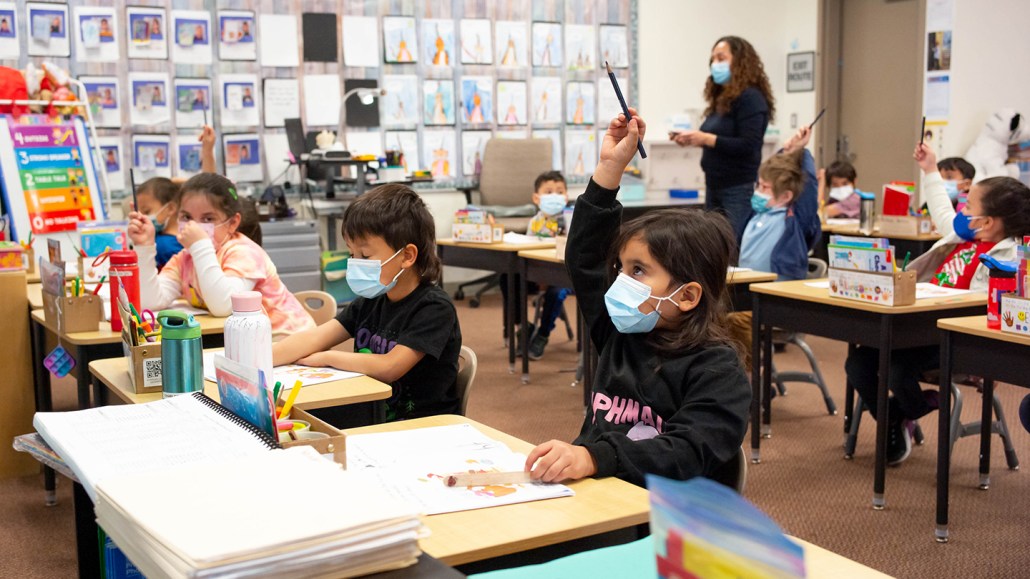School mask mandates in the U.S. reduced coronavirus transmission
Mandatory masking lowered transmission of the delta variant by 72 percent

Kindergarten students at Stanley Mosk Elementary School in Los Angeles wear masks while in class on March 11.
David Crane/MediaNews Group/Los Angeles Daily News via Getty Images







